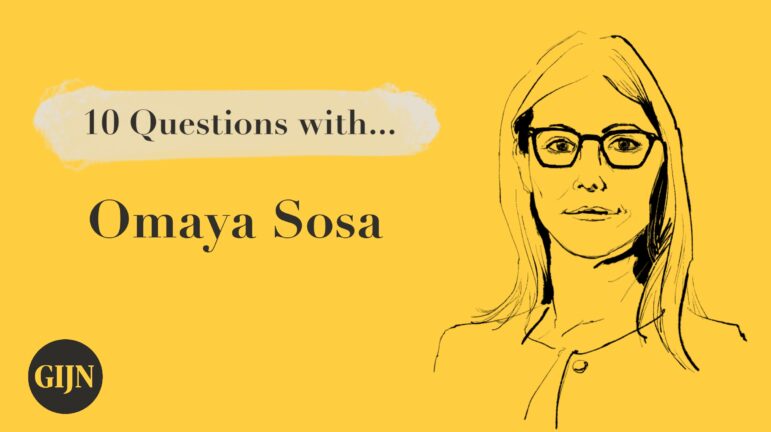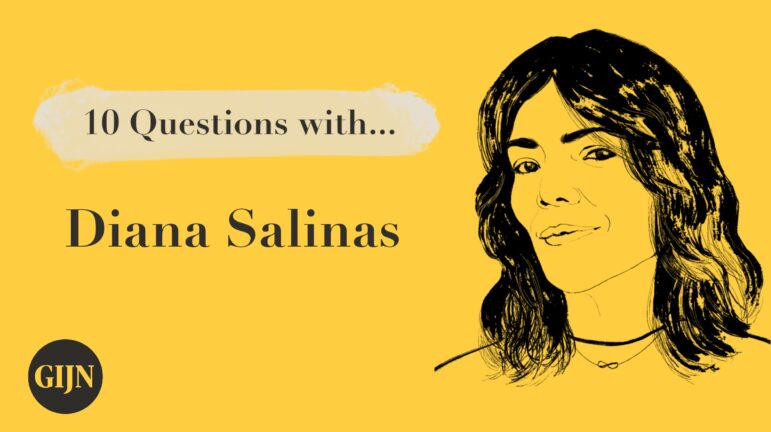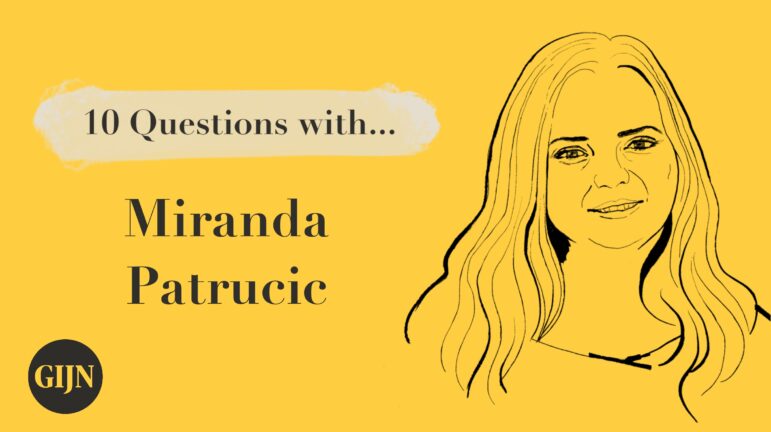

Illustration: Smaranda Tolosano for GIJN
Lessons Learned from Puerto Rican Journalist and Media Entrepreneur Omaya Sosa
Omaya Sosa is the founding co-director of Puerto Rico’s Centro de Periodismo Investigativo (CPI or, in English, Center for Investigative Journalism). With more than 20 years of experience not only working in Puerto Rico, but also organizing and collaborating with media outlets from other Caribbean islands, she has witnessed many things, including her colleagues receiving threats and even denials of their residence visas after exposing corrupt individuals. Last November, she received an award at COLPIN, the most prestigious conference of investigative journalists in Latin America, for her work as an editor on the series Paradise Lost. This interview, which was conducted in Spanish, is part of GIJN’s ongoing series talking with leading investigative journalists around the world.
1. Of all the investigations you’ve worked on, which has been your favorite and why?
Omaya Sosa: Hurricane Maria’s Dead because we managed to prove the death of thousands of Puerto Ricans due to the negligence of the government, against the desire of the government itself to hide what was happening during the disaster.
2. What are the biggest challenges in terms of investigative reporting in Puerto Rico?
OS: Reluctance of public and private authorities to answer questions. The geographic size of the island makes investigating difficult as everyone knows each other and people are connected.

Hurricane Maria’s Dead, a collaboration of Quartz, the AP, and Puerto Rico’s Center for Investigation Journalism, detailed a massive undercount of the storm’s fatalities. Image: Screenshot
3. What’s been the greatest challenge that you’ve faced in your time as an investigative journalist — censorship, personal danger, finding sources, discrimination?
OS: Censorship of the media outlet I used to work for, when touching on the issue of developers on the island. Also hostility at various times. I have felt instances of surveillance. In Puerto Rico, they don’t kill journalists but they did break into my house once. I found a drone another time. Particularly when investigating the now former Governor Ricardo Rosello.
4. What is your best tip or trick for interviewing?
OS: Lots of creativity and not losing focus.
5. What is a favorite reporting tool, database, or app that you use in your investigations?
OS: It sounds simple, but Excel, since it is the base of everything.
6. What’s the best advice you have received thus far in your career and what words of advice would you give an aspiring investigative journalist?
OS: Perhaps the best tip I got is to not give up. That you can always find a way to obtain the information you are looking for. If you feel like there’s a story, there probably is. And follow the money. Everything is money.
7. Who is a journalist you admire, and why?
OS: I really admire many women journalists from Latin America: Marina Walker Guevara, Gianina Segnini, Lise Olsen. I admire them for their tenacity, their courage and rigor, and knowledge with handling large-scale investigations.
8. What is the greatest mistake you’ve made and what lessons did you learn?
OS: Allowing an editor to publish an investigation I worked on and removing a response [from a person quoted in the story]. Just because he did not like that person. I should have fought it since the integrity of the story is very important.
9. How do you avoid burnout in your line of work?
OS: Over the years, I have learned that not everything is journalism. I have to make room for other things in my life. I turn off my cell phone and computer more often. I balance different activities and I like to spend time with my family.
10. What about investigative journalism do you find frustrating, or do you hope will change in the future?
OS: We must make our jobs more and more accessible to people and investigate what people want, not what we want. Be able to dig into what means something to the population, not just the elite. Speak in simple and relevant terms.
Additional Resources
Lessons Learned from Investigative Journalist Hayatte Abdou, from the Comoros
Lessons and Advice from The Caravan’s Vinod K. Jose
Editor’s Pick: 2022’s Best Investigative Stories from Latin America
 Andrea Arzaba is a journalist and GIJN’s Spanish Editor. As a reporter and media professional, she has focused on documenting the stories of people in Latin America and Latinx communities in the US. She is an International Women’s Media Foundation fellow and part of Transparency International’s Young Journalists Program.
Andrea Arzaba is a journalist and GIJN’s Spanish Editor. As a reporter and media professional, she has focused on documenting the stories of people in Latin America and Latinx communities in the US. She is an International Women’s Media Foundation fellow and part of Transparency International’s Young Journalists Program.










